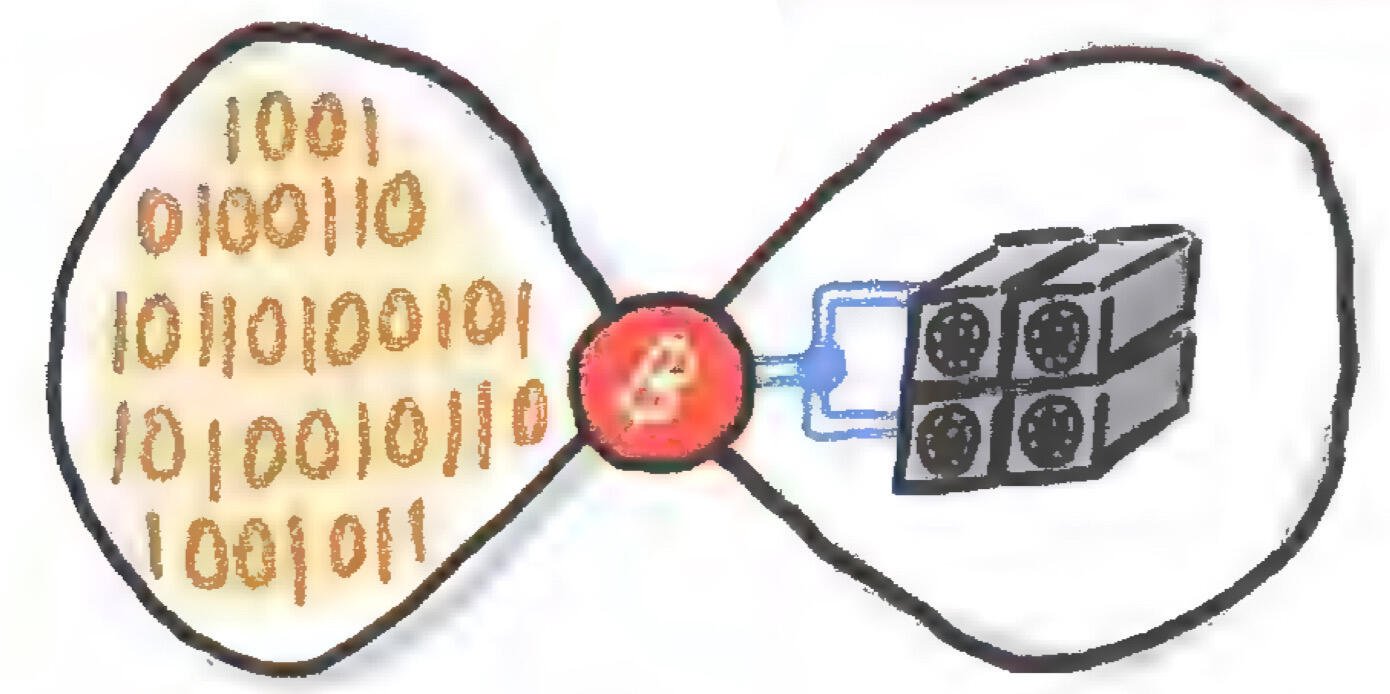Entropy, Proof of Work, and Bitcoin’s Decentralization
Introduction
Bitcoin is often cited as a prime example of a truly decentralized system. Unlike traditional financial systems that rely on central authorities, Bitcoin operates on a decentralized network of nodes, where each node independently validates and records transactions. This decentralization is critical for Bitcoin’s security, trust, and resistance to censorship. Understanding how entropy and Proof of Work (PoW) contribute to this decentralization helps elucidate why Bitcoin remains a robust and effective decentralized system. Additionally, examining how these concepts relate to thermodynamics can provide a deeper insight into the physical and informational transformations involved.
Understanding Entropy in Bitcoin
In the context of Bitcoin, entropy can be understood both from a physical perspective and an information-theoretic perspective:
Entropy in Physical Terms: In Bitcoin, physical entropy arises from the distributed nature of the network and the computational work involved in mining. Each miner competes to find a valid hash that meets a specific target by adjusting a nonce in the block header. This process introduces randomness and unpredictability into the network, leading to a high degree of entropy in terms of computational effort and energy consumption.
Entropy in Information Theory: Information entropy, introduced by Claude Shannon in 1948, measures the uncertainty or unpredictability associated with a random variable. In Bitcoin, this concept applies to the state of the blockchain. The entropy of Bitcoin's blockchain can be understood as the uncertainty in the ledger’s state before and after a new block is added [1][2].
Formulation of Information Entropy:
Shannon defined entropy H(X) for a discrete random variable X with a probability mass function P(x), where x represents the possible outcomes of X. The entropy H(X) is given by:
$$H(X) = -\sum_{x \in X} P(x) \log_2 P(x)$$
where:
- The sum is taken over all possible outcomes x of X,
- The logarithm base 2 measures entropy in bits.
In Bitcoin, X can be considered as the state of the blockchain, and P(x) represents the probability distribution of different blockchain states. High entropy indicates high uncertainty or disorder in the blockchain's state [1][2].
Proof of Work and Reducing Entropy
Proof of Work (PoW) plays a crucial role in Bitcoin’s mechanism for managing entropy and maintaining decentralization. Here’s how PoW works to reduce entropy in Bitcoin:
PoW and Hashing
Bitcoin miners perform PoW by repeatedly hashing the block header using the SHA-256 algorithm until they find a hash value that is less than or equal to the current target threshold. This process involves trial and error, where miners adjust a small variable called a nonce to generate new hash values. The difficulty of this task is adjusted periodically to ensure that new blocks are added roughly every 10 minutes.
The randomness and unpredictability of the hashing process introduce entropy into the mining process. However, once a valid hash is found, it imposes order on the blockchain by allowing the miner to add a new block, reducing the overall entropy of the ledger state [3].
Block Addition and Entropy Reduction
When a miner successfully finds a valid hash that meets the difficulty target, they add a new block to the blockchain. This process involves:
- Verification: The solution (i.e., the valid hash) is verified by other nodes, confirming the correctness and integrity of the block.
- Consensus: The new block is propagated across the network, and nodes update their copies of the blockchain.
The addition of a new block with a valid PoW solution reduces the entropy of the ledger state S. To quantify this, let’s relate the reduction in entropy to the probability of finding a valid hash:
Entropy Reduction Quantification
The probability of finding a valid hash p affects the entropy of the blockchain state. Initially, the entropy H(S) of the ledger state before adding the block can be modeled as:
$$H(S) = -\sum_{s \in S} P(s) \log_2 P(s)$$
After a block is mined and added to the blockchain, the entropy H(S') of the new ledger state S' can be expressed as:
$$H(S') = -\sum_{s' \in S'} P(s') \log_2 P(s')$$
To determine H(S'), consider the effect of p. The addition of a block with a valid PoW solution implies that the blockchain state is more certain and less variable. This leads to a more concentrated probability distribution over valid states.
If the probability distribution P(s') of the new states is more concentrated due to the successful addition of a block, the entropy H(S') decreases. Mathematically, this concentration can be approximated by the lower entropy due to the fewer number of valid states s':
$$H(S') = -p\log_2(p)-(1-p)log_2(1-p)$$
With high difficulty, the probability p of successfully finding a valid hash is very low, which means that only a few states are valid. As a result, the entropy contribution of these few valid states is reduced, leading to a lower overall entropy H(S′). This is because the logarithm of a small probability is large and negative, but when multiplied by a very small probability, the result is small. Thus, the overall entropy H(S′) decreases.
Therefore, the reduction in entropy due to PoW can then be represented as:
$$ΔH=H(S′)−H(S)$$
Given that H(S′)<H(S), ΔH is negative, reflecting the decrease in uncertainty about the blockchain state due to the successful resolution of the PoW.
This reduction in entropy highlights how PoW helps maintain the order and consistency of the blockchain, even as new blocks are added.
Proof of Work as a Mechanism for Order
PoW transforms physical work into a structured record. The process ensures that adding new blocks requires solving computational puzzles, which imposes a cost on creating new records. This cost (in terms of computational effort and energy) acts as a deterrent against tampering and contributes to maintaining the order and consistency of the blockchain.
The reduction in entropy due to PoW can be formalized by noting that the probability distribution of valid ledger states becomes more concentrated after a block is added. This makes the state of the ledger more predictable and less uncertain, reducing the overall entropy.
Relation to Thermodynamics
The concept of entropy in thermodynamics refers to the measure of disorder or randomness in a physical system. In thermodynamics:
Entropy and Energy: In thermodynamics, entropy is a measure of the amount of energy in a system that is not available to do work. When energy is added to a system, it often leads to an increase in entropy, reflecting the system's transition to a more disordered state.
Entropy Reduction: To reduce entropy in a thermodynamic system, energy must be expended to impose order. For example, cooling a system can reduce its entropy by decreasing its temperature and organizing the particles in a more orderly state.
Applying Thermodynamic Concepts to Bitcoin
Physical Work in PoW: In Bitcoin, PoW can be analogously related to thermodynamic processes. The computational work required for PoW is akin to expending physical energy in thermodynamics. The physical energy used by miners in finding a valid hash can be seen as a mechanism to impose order on the blockchain, similar to how energy can be used to reduce entropy in a physical system.
Transforming Physical to Informational Order: PoW transforms physical work into informational order. Just as energy expenditure in thermodynamics can lead to a more ordered state, the computational work done in PoW helps organize and secure the blockchain, reducing the entropy of the ledger state.
Balancing Order and Disorder: The relationship between energy and entropy in thermodynamics mirrors the balance between order and disorder in Bitcoin’s blockchain. The work done in PoW introduces structure and consistency, reducing entropy and enhancing the system's overall stability.
Proof of Stake: Limitations in Reducing Entropy
In contrast, Proof of Stake (PoS), while offering a different approach to consensus, faces limitations in managing entropy:
No Physical Energy Input: PoS does not involve physical work or energy expenditure. Validators are chosen based on their financial stake rather than their computational efforts, which limits its ability to impose order and structure.
Internal System Dynamics: PoS operates within a closed system of staked assets, relying on the existing wealth of participants rather than external physical resources. This does not effectively reduce entropy in the same way that PoW does.
Potential for Centralization: PoS can lead to centralization if a few participants control a large portion of the stake, introducing new forms of entropy and inequality.
Bitcoin: A Truly Decentralized System
Bitcoin’s decentralization is supported by its use of Proof of Work, which effectively reduces entropy by transforming physical energy into a structured and ordered blockchain. This ensures that the network remains secure, consistent, and resistant to tampering while maintaining its decentralized nature. The relationship between physical energy, information entropy, and thermodynamic entropy underscores the complex interplay between order and disorder in Bitcoin’s design and operation.
Acknowledgments
This article benefited from the assistance of ChatGPT, an AI language model developed by OpenAI, which provided valuable insights and suggestions for understanding and explaining concepts related to entropy in decentralized systems and Bitcoin mining.
References
Shannon, C. E. (1948). "A Mathematical Theory of Communication." The Bell System Technical Journal, 27(3), 379-423.
Cover, T. M., & Thomas, J. A. (2006). Elements of Information Theory (2nd ed.). Wiley.
Nakamoto, S. (2008). "Bitcoin: A Peer-to-Peer Electronic Cash System." Link to paper




